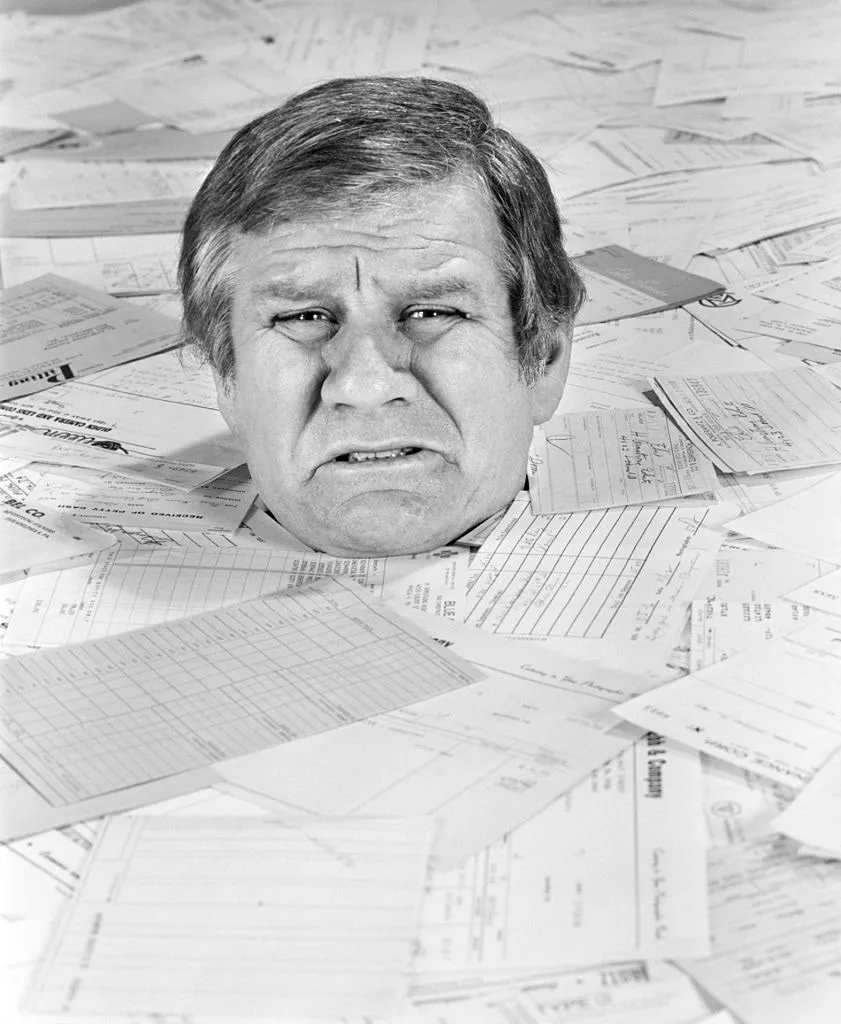Pandemic-era savings have been wiped out, inflation remains above trend, and interest rates are the highest they have been in 22 years. It is no surprise that US household debt accelerated to a fresh record high in the last quarter. Is there any way to plug all the red ink flooding the United States? The long answer is yes, with an if. The short response is no, with a but.
US Household Debt in Q3
In the third quarter, US household debt climbed $228 billion, or 1.3%, to $17.29 trillion, a new all-time high, according to the Federal Reserve Bank of New York. Mortgage balances jumped by $126 billion to $12.14 trillion, credit card debt surged by $48 billion to $1.08 trillion, and auto loans swelled by $13 billion to $1.6 trillion. Student loan debt increased by $30 billion to $1.599 trillion, and “other,” like retail cards and lines of credit, edged up at a tepid pace of $2 billion to $529 billion.

(Photo by Liu Guanguan/China News Service/VCG via Getty Images)
While the substantial increase in US household debt venturing into the expensive fourth-quarter holiday season was concerning, the uptick in delinquency rates headlined the report. The overall flow into serious delinquency (90 days or more) advanced to 1.28% during the July-September period compared to the same time a year ago. Mortgage delinquencies inched higher to 0.72%, auto loans swelled to 2.53%, credit cards soared to 5.78%, and “other” surged to just below 5%.
New York Fed economists and policy analysts note that the share of newly delinquent credit card users advanced in the third quarter and surpassed the pre-pandemic average. The most affected demographics? Millennials and Generation Z, says Donghoon Lee, economic research advisor at the New York Fed. “Credit card balances experienced a large jump in the third quarter, consistent with strong consumer spending and real GDP growth,” Lee stated. “The continued rise in credit card delinquency rates is broad based across area income and region, but particularly pronounced among millennials and those with auto loans or student loans.”
What is even more concerning is that delinquency rates are rising fastest for low-income areas. At the same time, the regional central bank’s US household debt report found that each income quartile area has raised at or above their pre-crisis levels. The situation could intensify because the research shows that borrowers with auto loans or student loans were more likely to fall behind on their obligations than before COVID-19
The appetite for credit ballooned in the previous quarter as aggregate limits on these pieces of plastic advanced by 2.46% quarter-over-quarter, or $113 billion. As the cost of living grows and the costly Christmas season is on the horizon, the October-December US household debt study will be a riveting read. Early forecasts suggest that Americans will end the year with as much as $350 billion more debt than they started in 2023. And remember, this is all transpiring in a below-4% unemployment climate, a Q3 4.9% GDP growth rate, and Bidenomics running roughshod on the economic landscape.
Servicing Costs
John Kiernan, a WalletHub editor, says the challenge for the country is not household debt but rather servicing costs. He noted in a November 7 report:
“The cost of our debt is what’s really out of whack right now, as interest rates on credit cards and some loans are in record territory. People sometimes forget the cost element when considering household debt, especially when it comes to debt with a variable interest rate, and this can lead to delayed sticker shock and ability-to-pay concerns.”
Indeed, the typical credit card interest rate is around 24%. As the cost of money becomes even more expensive in a rising-rate environment, indebted borrowers could be spending tens of billions of dollars more in interest this year. With the Federal Reserve humming a “higher-for-longer” mantra, borrowing will remain elevated and weigh on households, businesses, and the government.
Tapping, Swiping, and Inserting on Heaven’s Door
Unfortunately for cash-strapped Americans, the credit markets are getting tighter every month. According to a recent report from the Consumer Financial Protection Bureau, consumers are requesting limit increases and auto loans. But lenders have denied loan applications at their highest levels since 2018. In other words, the public cannot keep borrowing funds to stay afloat, even if it is the government’s fault for the heightened cost of living and erosion of purchasing power. The Fed has stated that the effects of last year’s quantitative tightening efforts are beginning to be felt. The impacts of this year’s rate hikes are still traveling through the marketplace. Will the Eccles Building break the US economy – and consumers’ wallets?




